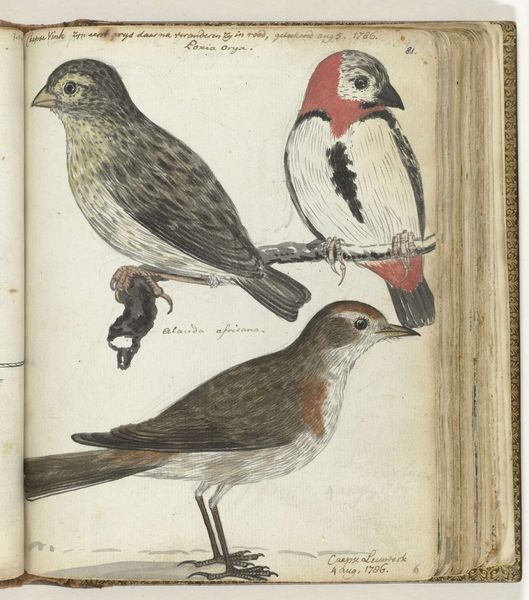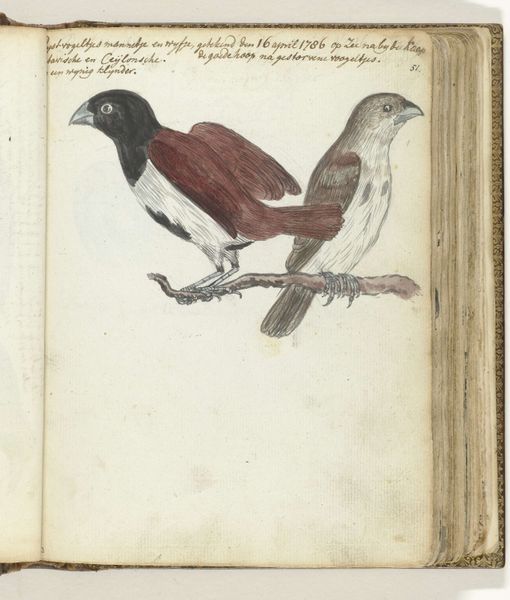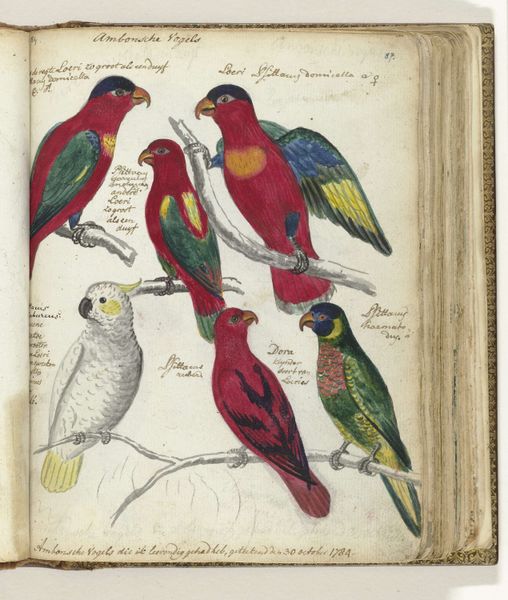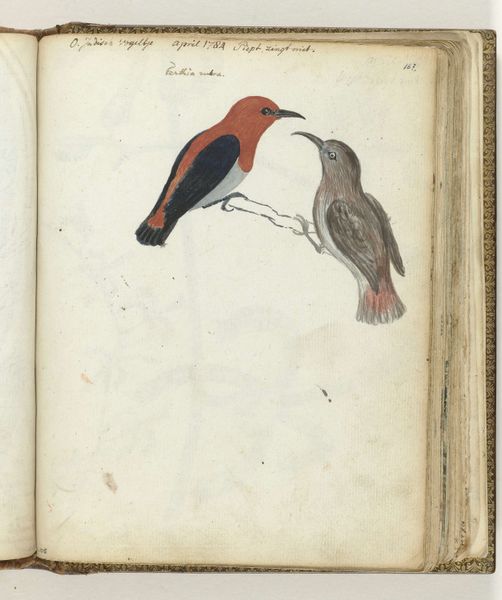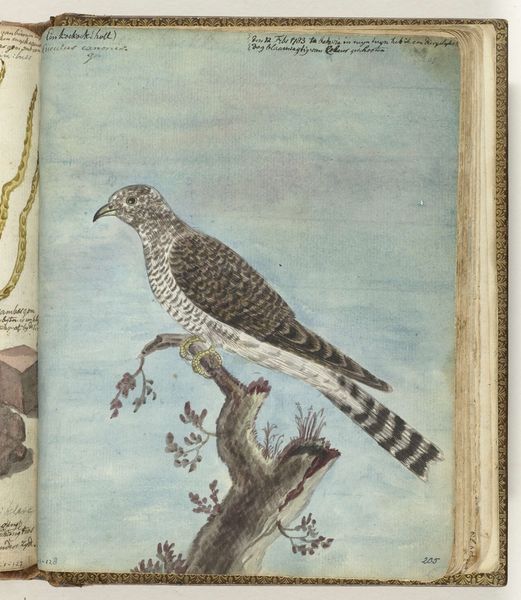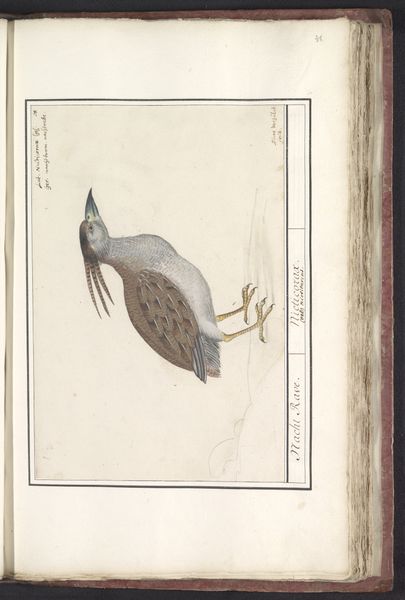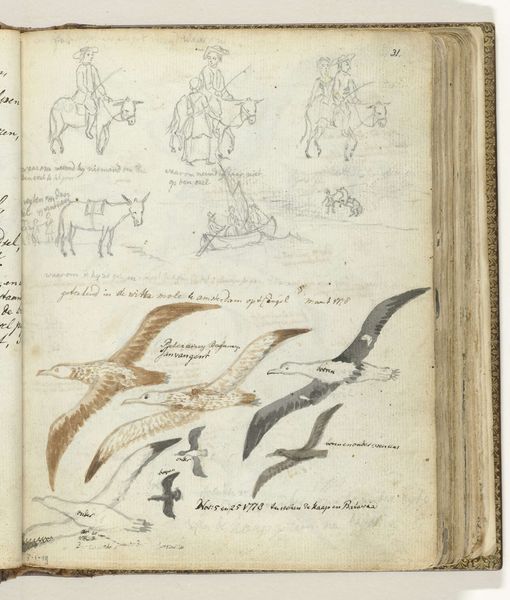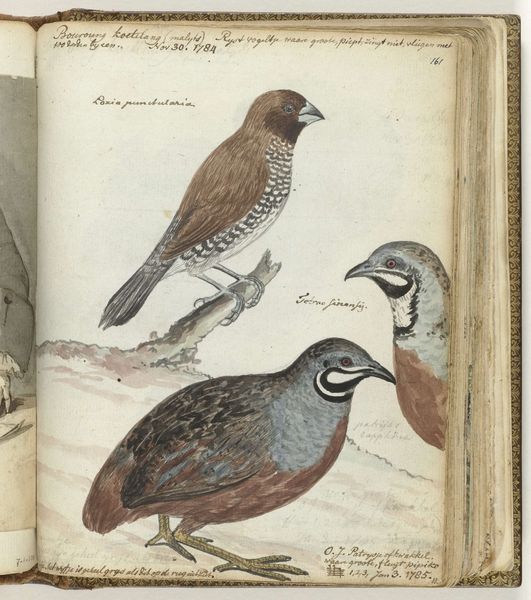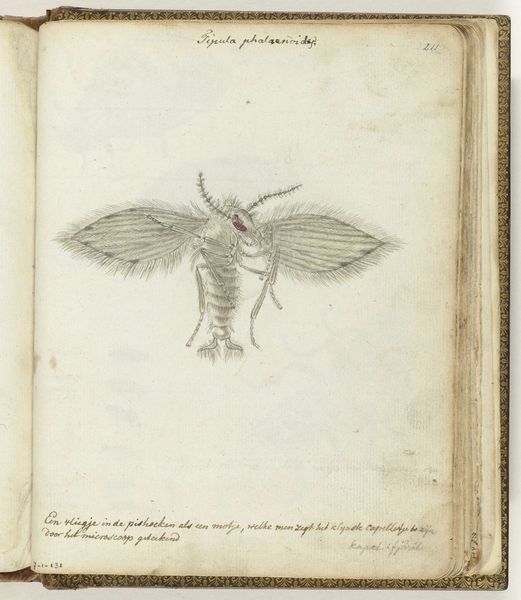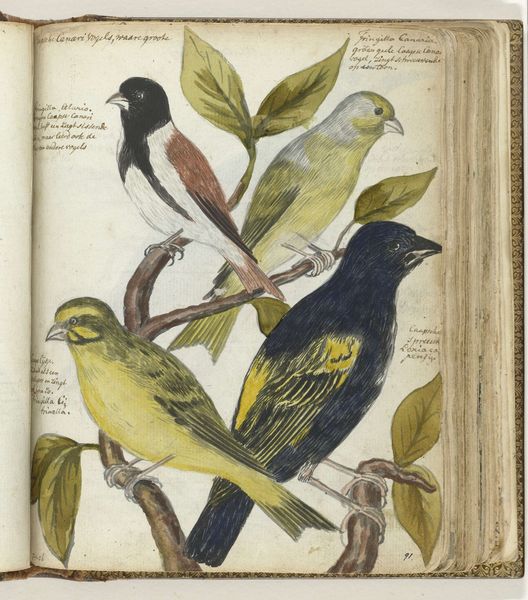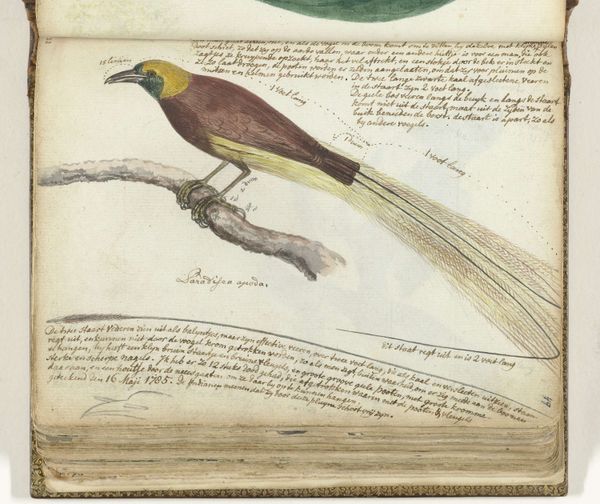
#
aged paper
#
toned paper
#
sketch book
#
personal sketchbook
#
coloured pencil
#
sketchbook drawing
#
watercolour bleed
#
watercolour illustration
#
sketchbook art
#
watercolor
Dimensions: height 195 mm, width 155 mm
Copyright: Rijks Museum: Open Domain
Editor: This is an illustration of cockatoos from Ambon, dated possibly 1784, by Jan Brandes. It's done with watercolor and colored pencil, giving it this wonderful delicate feel. What strikes me most is how the artist captured their personalities in just a few strokes. What do you see in this sketchbook page? Curator: Well, the sketch isn't just a depiction of birds, is it? Look at the gaze of the cockatoos. Brandes is trying to capture something more—a kind of self-awareness. These weren't simply exotic specimens but creatures observed with an eye for their individual traits, hinting at intelligence. Notice the variations in posture. Each bird suggests a different aspect of this species. The Ambon, in particular, evokes not only natural history, but humanity, especially given that parrots are excellent mimics of our words. What cultural memory do they evoke? Editor: That's fascinating. I hadn’t considered that aspect. You're saying he's imbuing them with human characteristics, or perhaps anxieties, through his rendering? It’s as if they’re not just being observed, but are observing us, the viewer. Curator: Precisely. The open sketchbook format reinforces this idea. It gives the impression that this page is documenting not only these cockatoos, but Brandes’ own contemplation of his relationship to nature and these exotic creatures. Does that change how you view it? Editor: Absolutely. Now I see it as a deeper reflection on the connection, and perhaps the separation, between humans and the natural world. This idea about this drawing referencing shared experiences has helped unlock it for me! Curator: Indeed, art unveils how visual symbols help transmit and negotiate memories, not only historical, but human and individual.
Comments
No comments
Be the first to comment and join the conversation on the ultimate creative platform.

